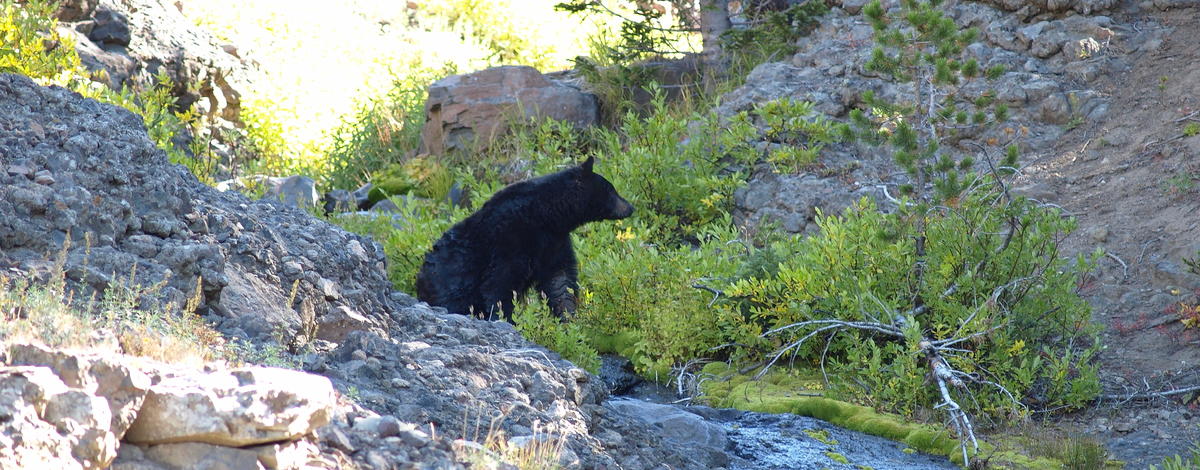With Idaho’s spring black bear hunting season underway, the Idaho Department of Fish and Game reminds hunters that there are specialized regulations that they have the responsibility to follow.
Hunters are encouraged to carefully review a copy of the 2017-2018 Big Game Seasons and Rules brochure. Black bear information can be found on pages 67-72. Rule brochures are available at license vendors, online, as well as your local Fish and Game office. Don’t hesitate to contact your local Fish and Game office if you have any questions.
Hunters are reminded that certain units are open to use of bait and dogs, while others are not. In fact, Idaho is one of only 12 states that allow hunters to bait for black bear, resulting in high interest from resident and non-resident hunters alike.
Ethical behavior is especially important when placing bear baits. Anyone placing bait for the purpose of hunting is required to obtain a baiting permit. Placing baiting at least one-half mile away from any campground, picnic area or dwelling is required to reduce conflict with the general public. In addition, Idaho has many rules governing what kind of bait can be used, what it’s contained in and where it may be placed.
For example, no parts of animals or fish that are classified as game animals can be used as bait. The skin must be removed from any mammal parts or carcasses. Salt in any form cannot be used. Hunters also need to remember that all bait containers, materials and any structure constructed at bait sites must be removed within seven days after the close of the season.
No bait site may be located within 200 feet of any water (such as a lake, pond, reservoir, or year-round free-flowing stream or spring). In all regions except the Panhandle and Clearwater regions, no bait site may be located within 200 yards of any maintained trail or any established roadway that is open to the general public for motorized traffic and capable of being traveled by full-sized automobiles.
An established roadway is defined as any road that is built, maintained, approved, established, or designated by any government entity or private landowner for the purpose of travel by full-sized automobiles. An established roadway shows evidence of repeated use by full-sized automobiles, and may include a traveled way of natural earth with depressed wheel tracks and little or no vegetation in the tracks.
If you can legally be in an area with a full sized vehicle, then your bait must be 200 yards from that road. If the trail is maintained, then you must be 200 yards from the trail to legally place bait in that location.
Successful bear hunters are required to present both the skull and hide to a Fish and Game regional office, conservation officer or official checkpoint for removal of a premolar and have the pelt tagged within 10 days of the date of harvest.
While Idaho’s bear baiting regulations are simple, violations still occur. Before heading out this spring, carefully review the seasons and rules brochure and contact your nearest Fish and Game office if you have questions.
If you observe any illegal activity or violations of the fishing and hunting rules, please contact your nearest Fish and Game representative or call the Citizens Against Poaching Hotline at 1-800-632-5999.

